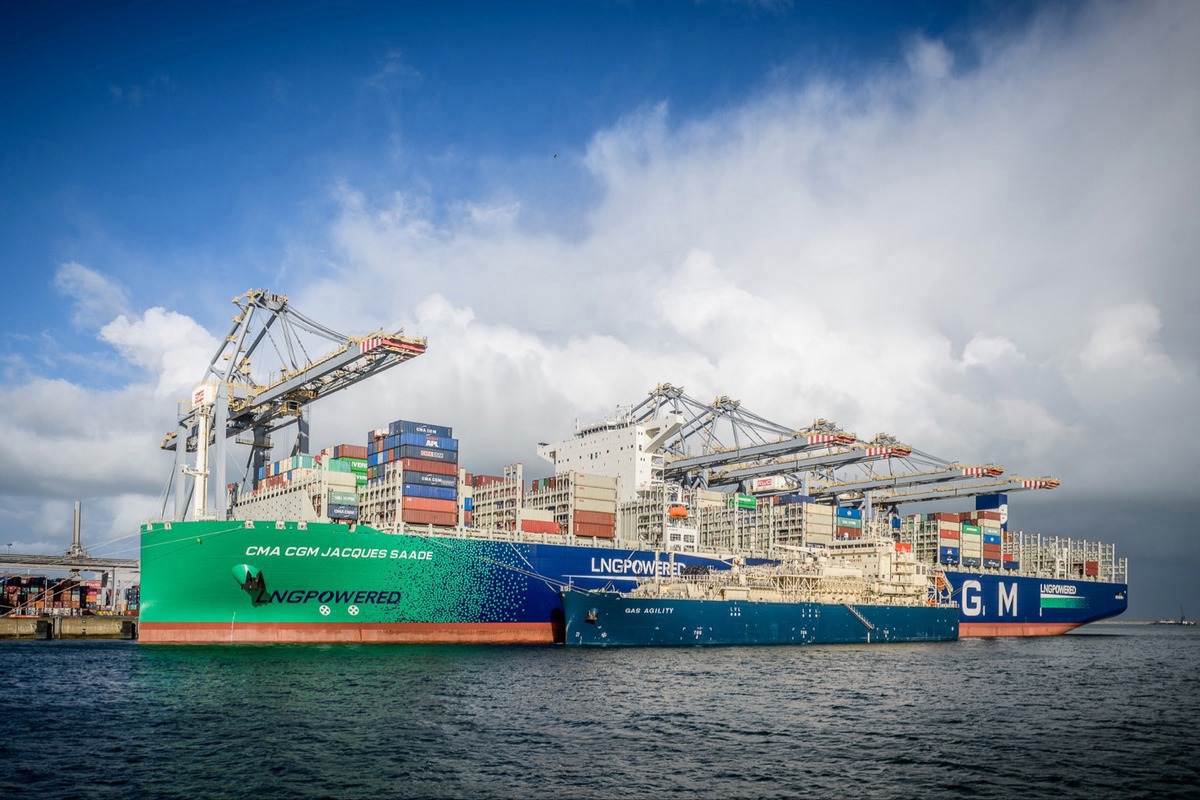LNG upstream emissions vary by country of origin – T&E
LNG, often promoted as a cleaner fuel for the shipping industry, may not deliver the environmental benefits its proponents claim, according to a new report by Transport & Environment (T&E).
 PHOTO: CMA CGM's LNG-powered vessel bunkered at the Port of Rotterdam. CMA CGM
PHOTO: CMA CGM's LNG-powered vessel bunkered at the Port of Rotterdam. CMA CGM
The study highlights substantial emissions generated during LNG’s production, processing, and transport phases – emissions that are often overlooked in regulatory frameworks.
Known as “well-to-tank” (WTT) emissions, these upstream greenhouse gas emissions (GHG) vary widely depending on the origin of the LNG. Research by T&E has found that, on average, LNG imported into Europe produces 24.4 grams of CO2 equivalent per megajoule (gCO2e/MJ) of upstream emissions. This figure is about 30% higher than the 18.5 gCO2e/MJ that is assumed in the EU's FuelEU Maritime regulation.
The FuelEU Maritime uses a standardised upstream emission factor of 18.5 gCO2e/MJ of energy.
Climate risks outweigh benefits
While LNG during combustion produces less carbon dioxide (CO2) and fewer air pollutants than traditional heavy fuel oil, the study underscores the dual climate risks posed by methane slip and upstream emissions. Methane, the primary component of LNG, is a greenhouse gas nearly 100 times more potent than CO2 over a 20-year period. Even small leaks during combustion or handling of the fuel can negate any climate benefits LNG might offer.
“LNG’s climate impact doesn’t stop at the engine. Upstream emissions add significant GHG loads to the fuel’s life cycle,” Sustainable Shipping Manager at T&E UK Jonathan Hood said.
The report identifies major variations in upstream emissions by country of origin. For instance, Russian LNG records WTT emissions of up to 28 gCO2e/MJ, while Norwegian LNG averages as low as 12.6 gCO2e/MJ. The lack of standardised reporting practices, T&E notes, exacerbates discrepancies in data accuracy.
Policy failures and calls for action
T&E argues that the FuelEU Maritime Regulation underestimates LNG’s upstream emissions, and it calls for an urgent revision of emission factors to reflect recent scientific findings. Under current policies, T&E estimates that unaccounted emissions from LNG-powered ships could exceed 811,000 mt of CO2 annually – equivalent to 223 container ship voyages between the US and the Netherlands.
On the global stage, the International Maritime Organization (IMO) has not yet established accurate default emission factors for shipping fuels, which increases the risk of underreported emissions, the report mentions.
“The IMO must adopt a life-cycle approach to fuel emissions,” Hood said. “Anything less risks locking the shipping sector into decades of fossil fuel dependence.”
A popular but flawed alternative fuel
Despite facing criticism, LNG continues to dominate as a leading "alternative" marine fuel. Nearly 1,200 LNG-powered vessels are already in operation, with an additional 1,000 on order. By 2030, T&E forecasts that LNG will represent over 10% of global marine fuel consumption.
However, mounting evidence against its claimed climate benefits suggests that the shipping industry's reliance on LNG could obstruct efforts to achieve decarbonisation targets.
By Debarati Bhattacharjee
Please get in touch with comments or additional info to news@engine.online





